Abergavenny Castle
IN the 16th century, the historian William Camden wrote that Abergavenny Castle “has been oftener stain’d with the infamy of treachery, than any other castle in Wales. He had a point. Let’s leave the study of its ruined architecture and general history for another day and focus on the bloodbath this castle has become famous.
It was Christmas Day in 1175, and the lord of the manor, one William de Braose, fondly remembered as the Abergavenny Ogre, kindly invited all the local Welsh Chieftains to a festive knees up at the town’s castle.
Willing to put aside years of bloody conflict, the Celts happily accepted the Norman lord’s invite and led by Sitsyllt ap Dyfnawl, the Welsh lads turned up expecting to share a few gallons of ale and make merry with the boys from France.
Except, the only thing on the menu that night was carnage and lots of it.
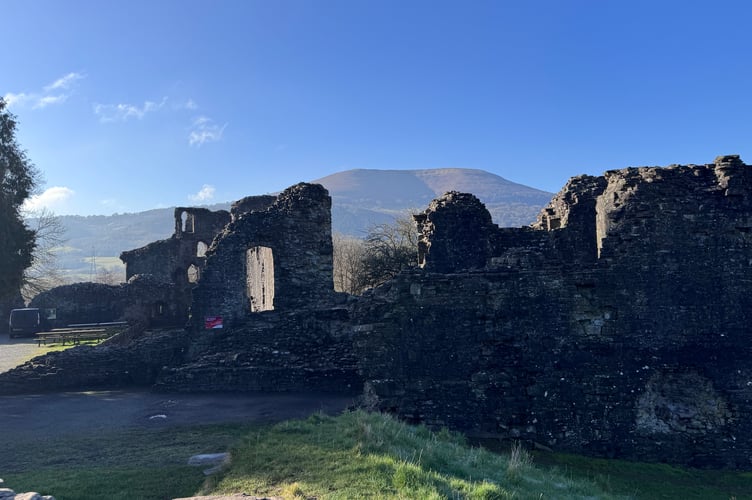
After politely leaving their swords, axes, and spears at the door, Sitsyllt and his crew took their seats at the table in the Great Hall, picked up their goblets of mead, and looked forward to the hog’s heads, roast swan, and other Norman delicacies on offer.
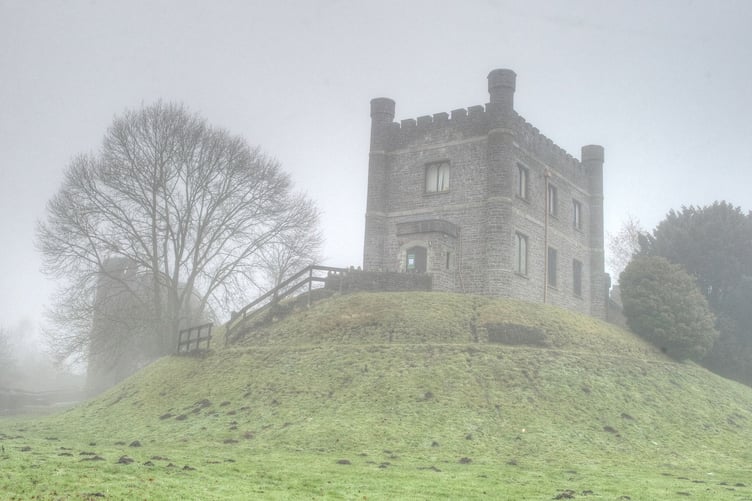
However, things quickly turned sour, when the Abergavenny Ogre announced that he had recently decided that from that day on no Welshman should have the right to bear arms, so there.
As you can imagine, this little revelatory nugget sat in the stomach of the gathered assembled about as well as an undercooked chunk of rotten fish, but before they could protest, or beat the living daylights out of Willy for his brass-necked audacity and poor etiquette, it all went to hell in a handcart.
At a curt pre-arranged nod of the head from William de Braose, the time-honored bond between visitor and guest wasn’t so much broken but ruthlessly torn apart, as a horde of soldiers led by the Sheriff of Hereford, Ranulph Poer, descended upon the unarmed and shell-shocked Welshman and butchered every last one of them in a gleeful savagery.
All that is except, Prince Iorwerth of Caerleon who is said to have wrested a sword from a witless Norman and hacked his way through the throng to liberty and life.
Not content with such a massacre, the bloodthirsty butcher Braose, saddled up a posse of his men the very next day and once again went on the rampage. This time to Sitsyllt’s home where in front of his widow, they killed his seven-year-old son Cadwaladr.
Such treachery and psychopathic behaviour earned de Braose a defining role in Abergavenny’s history. The belligerent brute nearly got his just rewards in 1182 when the sons of the slaughtered Welshmen came of age and stormed the gates of Abergavenny Castle, killing the entire garrison, but to their disappointment, de Braose and his wife Maud were elsewhere.
Wicked Willy continued to narrowly escape justice for his diabolical deeds, and he was never dealt retribution by a Welsh hand.
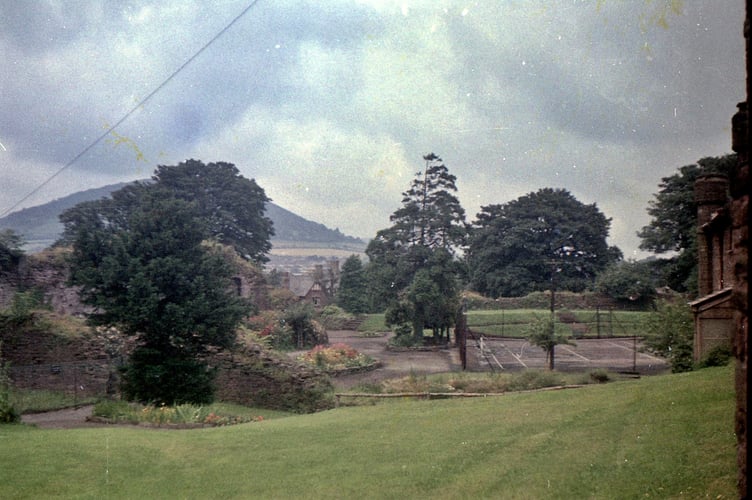
Instead, he fell out of favour with King John and after having all his castles seized, he fled to Ireland with his family, where his wife and eldest son were captured by the King’s men and starved to death at Windsor Castle, such was the niceties of Norman nobility.
As for the Abergavenny Ogre, he fled to France disguised as a leper, where he died on August 9, 1211. An ignoble end to a wretched creature.
Abergavenny Castle remains a lovely place to visit though, particularly during the annual food festival.
Usk Castle
Despite its abundance of charms and rare delights, Usk Castle is perhaps one of Monmouthshire’s most overlooked fortresses.
It’s not as widely promoted as a lot of the county’s castles and although it is close to the picturesque town of Usk, you won’t stumble across it by chance.
It’s billed as a secret castle waiting to be discovered but once discovered it’s never forgotten.
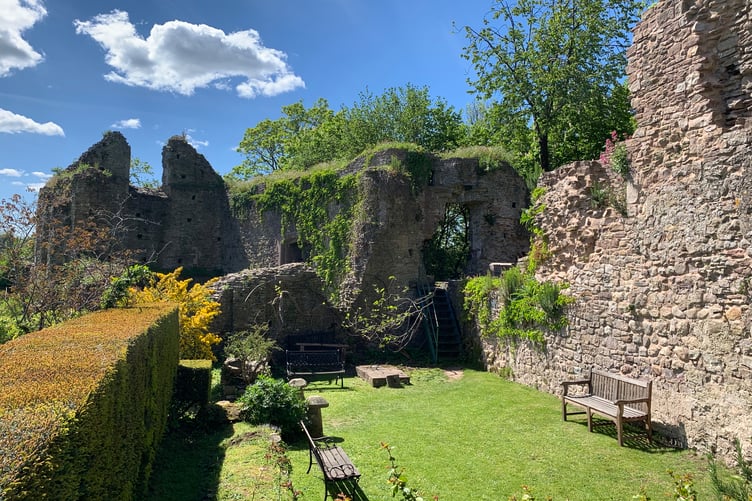
Upon walking up the gentle hill and steps leading through its fairytale gates the first impression of Usk Castle is that it is a masterpiece of elegant decay. Everywhere you look it’s hard to know where the ruins end and the hands of nature begin. It’s not so much like walking through the remains of a structure that has been reclaimed by vegetation but walking in a landscaped garden with a castle feature.
Legend claims that Richard Duke of York set up residence in the castle during the 1400s and his two sons Edward IV and Richard III were born in its walls.
The area’s most famous son, the Welsh historian Adam of Usk, took his first breath here. Rumour also has it that in the Treasure Tower a dog called ‘Coker’ once lived and this might just be the first reference to a cocker spaniel in recorded history.
With breathtaking views over Usk and an abundance of little, hidden corners to sit and take in the scenic surroundings, Usk Castle is something of an aesthetic wonder.
Although its history of blood and conquest tells a different tale.
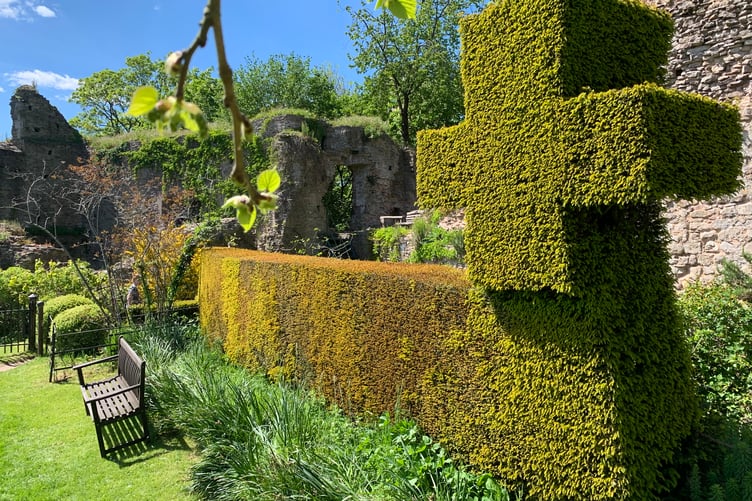
In 1170 the man who gave Usk Town its first charter Richard “Strongbow” de Clare supervised the building of the Great Keep on a site that probably once housed a wooden motte and bailey castle and was the former residence of William the Bastard’s standard-bearer at the Battle of Hastings.
The Garrison Tower has been described as a military masterpiece and was built in 1209 by William, Earl of Pembroke. It was constructed during a time when England’s King John and Wales’s Llewellyn the Great weren’t exactly seeing eye to eye.
The castle was subject to many notable sieges during the medieval period. It was briefly in the hands of Hywel, a Welsh prince of Caerleon, but Henry II and his troops recaptured it and killed the prince.
In 1405 Owain Glyndwr laid siege to its walls during the Battle of Usk. Glyndwr suffered a terrible defeat at the hands of the future King Henry V and lost over 1,500 men.
That same year another Welsh prince Gruffydd Owain attempted to attack but he too suffered heavy losses when his forces were intercepted by English troops led by Lord Grey.
On a glorious day when the skies are blue and the sun is full and lazy, it’s hard to reconcile the carnage and screams that must have once echoed around this castle’s wars. Today it’s more popular as a spot for people to get married than it is for them to hack each other to pieces. Marriage and war! Cynics would argue they’re one and the same.
Raglan Castle
Led Zeppelin fans may recognise Raglan Castle from the concert movie ‘The Song Remains The Same.’ It features in the scene where Robert Plant, in full Arthurian regalia, battles a foe before throwing them into a moat.
It’s not hard to see why the legendary rockers were attracted to what in essence is a grand fortress-palace. With its breathtaking symmetry and appearance of regal grandeur, this bastion of stone looks like a set piece from ‘Lord Of The Rings.’
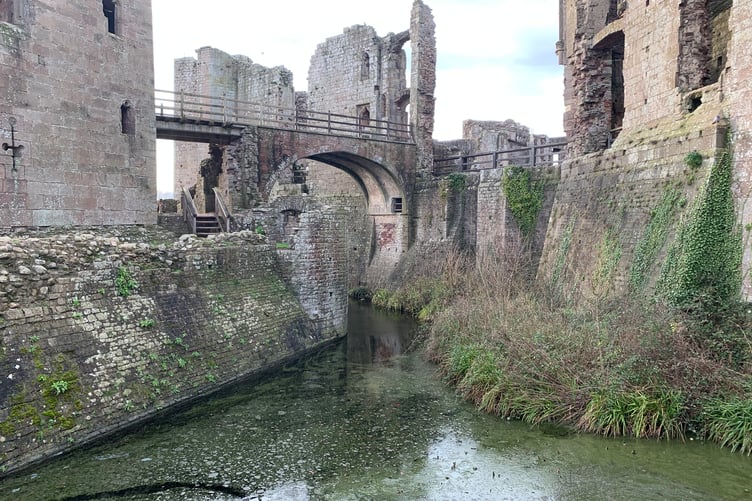
Except, Raglan Castle, which was designed to both impress and intimidate has a very real, rich, and colourful history that could rival any Tolkien saga.
The site was probably established as a motte-and-bailey castle in the late eleventh century when the Normans conquered Gwent, but the glorious building that dominates the surrounding countryside was initiated by the ‘blue knight of Gwent,’ Sir William ap Thomas.
The castle’s famous moated Great Tower was a real labour of love for Thomas, but after his death in 1445, his son William Herbert picked up the reins and really went to town on a building project that was both lavish and ambitious.
The veteran of the French wars, who made his fortune importing Gascony wine and played a pivotal role in defeating Lancastrian forces during the War of the Roses, was considered the most powerful Welshman of his era.
Obviously, Herbert wanted a residence to reflect this, and as you can still see today, Raglan Castle certainly ticks all the boxes.
On Sir William’s watch the Fountain Court, Pitched Stone Court, and the remarkable machicolated gatehouse were built, and the Castle earned the praise of poet Dafydd Llwyd who celebrated its “hundred rooms filled with festive fare, its hundred chimneys for men of high degree.”
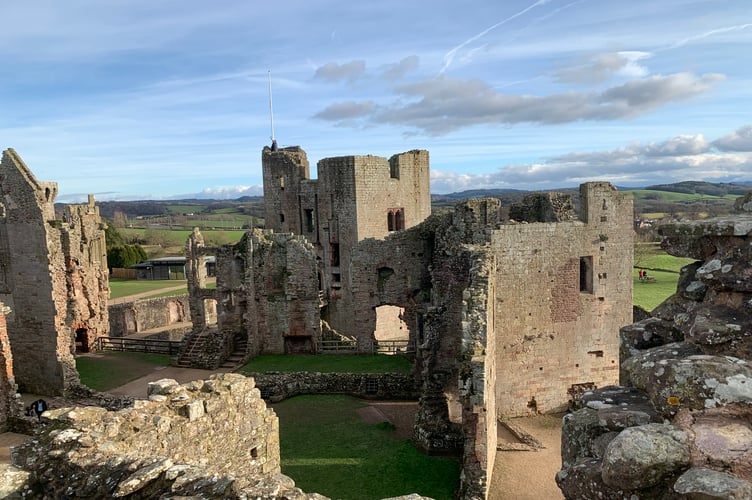
King Edward IV even sent the future King Henry VII to Raglan to be brought up under the tutelage of his firm favourite, Sir William.
Unfortunately for Sir William his ultimate vision for Raglan went unrealised when he suffered defeat at the battle of Edgecote in 1469 and was brutally beheaded.
His body was buried in the grounds of Tintern Abbey and the story of Raglan Castle turned a page when it passed into the hands of the Somersets, earls of Worcester.
In their velvet-gloved care, it was transformed into an exquisite Elizabethan country house surrounded by luxurious and landscaped Renaissance gardens with long-walled terraces and a lake.
Such was the Somersets’ appetite for big-dollar opulence, the moat walk was once adorned with statues of Roman emperors, but statues fall in the same way as empires, and all that remains today is empty spaces where sculptured marble once delighted the lords and ladies of the manor.
As for the Somersets, all their fancy finery and frolics were brought to an abrupt end in 1642 when Civil War broke out and the fifth earl of Worcester declared for the royalist cause.
Four years later the castle couldn’t survive ten weeks of siege by Sir Thomas Fairfax and his parliamentarian troops.
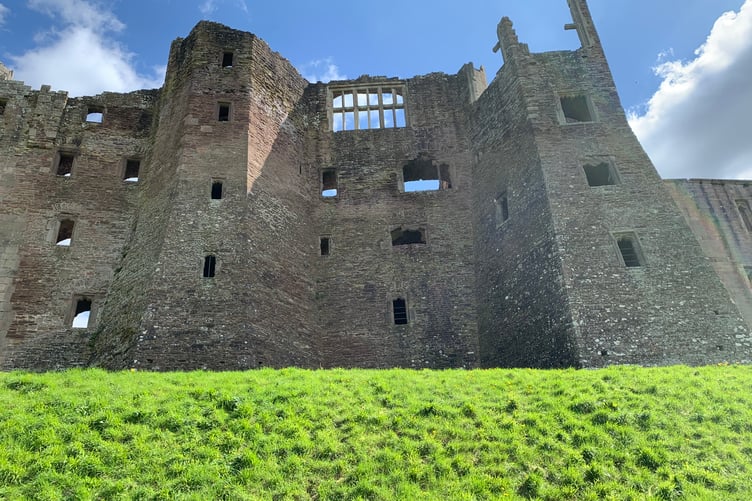
As Cromwell’s Roundheads moved in, so too did a harsh, unforgiving, and utilitarian mindset. A campaign of deliberate destruction began and much that had been so lovingly created over centuries was destroyed in a matter of days.
Fortunately, much of what once was still remains, and visitors to this special spot can walk in the footsteps of history and get a real feel for the drama and days of a bygone age.
Caldicot Castle
Caldicot Castle isn’t just a grandiose structure from days of old, it’s situated in an idyllic 55 acre Country Park which makes it the perfect place to visit to take your fill of both history and Mother Nature.
Built on an ancient site that has long been valued for its strategic value of being near the Bristol Channel, the Romans used this area to their advantage.
Not one to miss an opportunity to build a castle on a place where they could exert maximum control, the Normans were the first to dig in and build a motte with two baileys and a surrounding ditch.
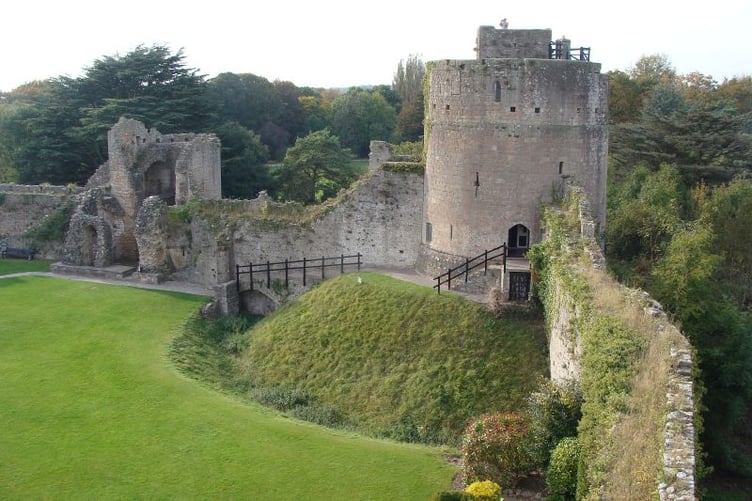
The impressive round keep which was built on the motte in 1221 is still there in all its crowning glory. A quick climb of the spiral staircase which weaves its way through the four-storied keep will take you to the top of this formidable architectural beauty with its nine-foot walls and basement which once concealed a vaulted dungeon.
In the bird’s nest of the keep, the view is outstanding. The castle, the park, the river Nedern, and the surrounding countryside are laid at your feet like an intricate tapestry. It’s the perfect place to appreciate this castle which was originally a fortress and later became a Victorian family home.
The infamous antiquary, Mr. J.R. Cobb, bought up the manor in 1855 and went on a mission to restore it to its former finery. Cobb was a big fan of castles and also came to the aid of the ones at both Manorbier and Pembroke. He made Caldicot his family home, and visitors to the castle today can marvel at how the medieval and the modern have mingled to create a ramshackle masterpiece.
Clytha Castle
There have been many architectural wonders built in the name of love. The Taj Mahal in India, the Mystery Castle in Phoenix, Arizona, the Swallow’s Nest Castle in the Ukraine, Dobroyd Castle in Todmorden, England, and of course, Clytha Castle in Monmouthshire.
Not so much a castle but more a folly, it nevertheless warrants its inclusion here.
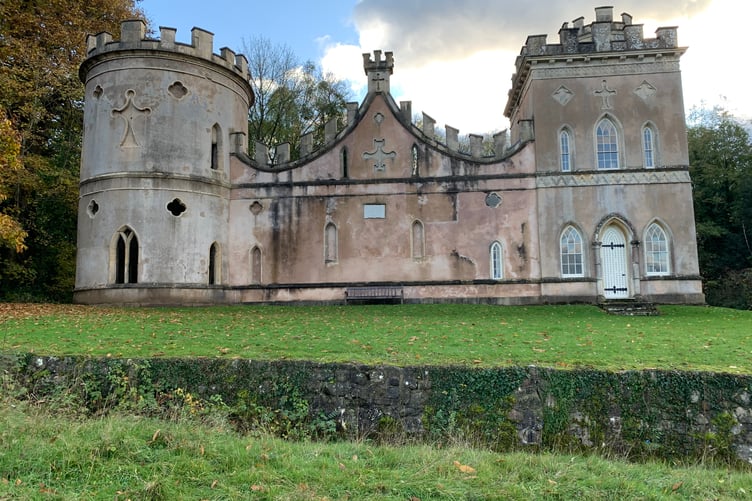
Perched on Clytha Hill and overlooking the sweeping and landscaped estate of the same name, which was built on the backs of theses who toiled in the coalfields and ironworks of the nearby valley towns, Clytha Castle is one of Wales’s most outstanding 18th-century follies.
John Davenport designed it and it was built in 1790 upon the orders of Clytha House’s William Jones who wanted it as a memorial to his late wife Elizabeth.
The purpose of the folly was to, ‘relieve a mind afflicted by the loss of a most excellent wife’.
The gothic design of the folly perfectly matches its remote setting and surrounding woodland, and with outstanding views of the Skirrid and Sugar-Loaf, it must have been a grand place to brood and reflect on mortality in front of an open fire whilst nursing a fine whiskey.
The Landmark Trust took over care and maintenance of the building in 1974 and it is frequently available for holiday rents.
There are many riverside rambles and routes leading to, from, and surrounding the Castle, including one which will take you to the remains of an Iron Age fort. The Clytha circular walk, in particular, is a great way to stretch the legs, take the air, and enjoy the sense of timelessness a soul can find in this neck of the woods.
Join us next week for part two of the tour when we visit Chepstow, Monmouth, Grosmont, Skenfrith, and Whitecastle.





Comments
This article has no comments yet. Be the first to leave a comment.